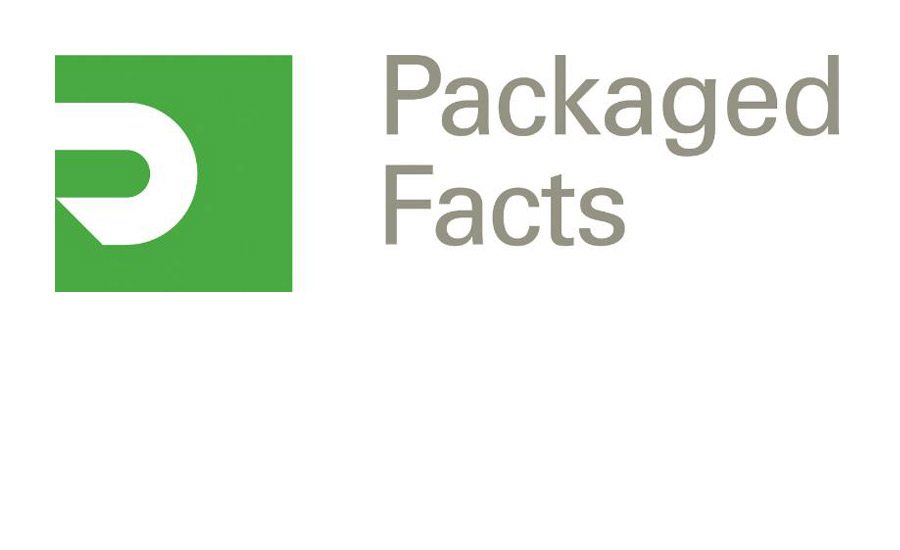It’s almost impossible to hear news related to gluten-free foods without also hearing about how most Americans don’t have celiac disease or even a gluten sensitivity and are essentially wasting money on an unnecessary fad. What’s sometimes missed is that a number of Americans simply want to go gluten-free because the effort contributes to their sense of mental and physical wellness, according to market research firm Packaged Facts in the brand new report Gluten-Free Foods in the US 6th Edition.
“Much like veganism and flexitarianism or going low-carb or dairy-free, avoiding gluten has become a true lifestyle choice for many Americans,” says David Sprinkle, research director, Packaged Facts. “These consumers may not have a specific health-related motive necessitating the switch to gluten-free. Yet for gluten-free advocates there’s often a satisfaction from furthering one’s overall health and nutrition goals. Wellness, as they say, begins in the mind.”
These dedicated gluten-free dieters have helped the gluten-free foods market demonstrate an annual growth rate of 36% over the five-year period ended in 2015, when the market reached $1.6 billion, according to Packaged Facts based on the specific categories analyzed for the report. The company forecasts the gluten free foods market will reach $2 billion in 2020 Gluten-free foods are gaining popularity partly because manufacturers and marketers are aligning new product developments with other emerging trends in the food and beverage industry. These trends include clean labels, marketer transparency, and the use of plant proteins and ancient grains.
Clean Label and Transparency Trending
A predominant trend in gluten-free product development reflects the concerns of the clean eating/clean-label movement, e.g., fewer and simpler ingredients; free-from formulations; minimally processed with organic, sustainable production methods; and transparency in business practices. Makers of gluten-free bean pasta are standouts in the promise of fewer and simpler ingredients, an attribute that is touted on product packages and on brand websites from the likes of Tolerant Foods, Gold Harbor, Simply 7 Snacks and Explore Cuisine.
One of the most notable examples is Quinn Snacks, which has staked out a pioneering position when it comes to transparency about the origins of the ingredients it uses. The company, which offers a line of organic snacks that include microwave popcorn, popped popcorn, popcorn kernels for home popping, and pretzels, includes a Farm-To-Bag page on its website. The company states that “Farm-to-Bag was created with the idea that transparency is the most powerful force for good in food. Quinn Snacks asserts that its Gluten-Free Pretzels is the first of its kind to be whole grain, ancient grain, corn-free, soy-free, dairy-free, and non-GMO project verified with full ingredient transparency.
Plant Protein and Ancient Grains Grow Gluten-Free Options
The desire for clean labels, ease of digestion, the need or desire to avoid allergens, compatibility with vegetarian and vegan lifestyles and concerns about sustainability among the general population are putting the spotlight on plant proteins. Legumes and beans, or pulses, are found in a growing array of gluten-free foods, along with ancient and sprouted grains.
Pulse-based ingredients are particularly valuable in improving the nutrient quality of gluten-free products, as they are richer in fiber, protein, and micronutrients than gluten-free staples rice and tapioca flour. There is a growing market for these ingredients in gluten-free extruded snacks and pasta.
The appeal of ancient and sprouted grains is much like that of pulses. For food processors, these ingredients provide whole food, plant-based protein sources that enhance appearance, deliver unique tastes and textures, pack a nutritional wallop, and invite variety and innovation. A number of ancient grains are gluten-free, as are sprouted ingredients made from gluten-free ancient grains, nuts, seeds, and beans.
View additional information about Gluten-Free Foods in the U.S. 6th Edition, including purchase options, the abstract, table of contents, and related reports at Packaged Facts’ website.
Clean Label, Plant Protein, and Ancient Grains Power Food Trends
Gluten-free industry capitalizes on consumer demand for clean labels, marketer transparency and vegan- and vegetarian-friendly products
